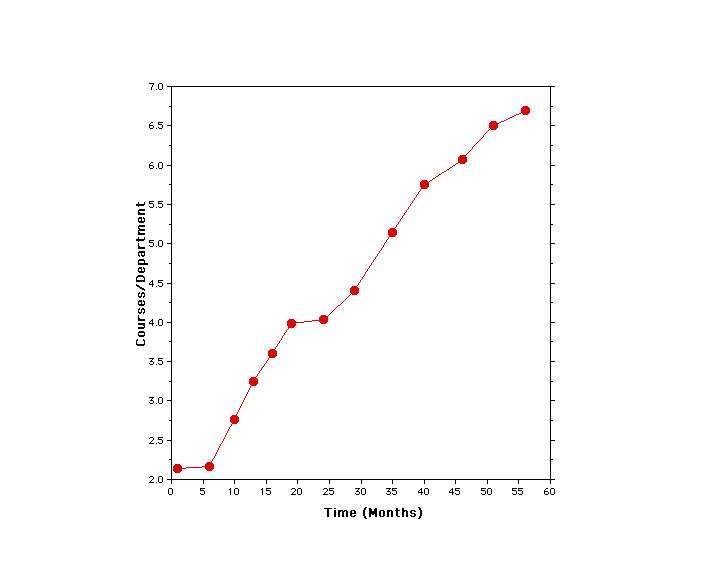Although I tell myself that I have not produced a course that could be distributed or delivered asynchronously, I have thought a lot about how Web materials can impact higher education and continuing education. Mechanically, it is relatively easy to . Deciding how to take advantage of the Web and avoid a "broadcasting" or formal lecture style, however, proved harder than I originally thought. Part of the dilemma seemed to be tied up in the question of why should I bother to use the Web.
"Futurists" tell me that a 22 year old will face an average of 6 career changes in the next 42 years. During the past 10 years I have written many letters of recommendation for former geology students who desired admission to law school .... an MBA program .... a teacher certification program, etc. Many, but certainly not all, of these former students were faced with a career change. Will the 22 year old in 1995 attempt to earn a formal degree to make his or her career changes in 2002 or 2009? I don't think that is realistic. Skills developed during formal and informal learning experiences will add flexibility but will that be sufficient? I believe that education is and will continue to evolve away from today's norm and that the Internet (or the granddaughter of the Internet) will play a prominent (if not dominate) role in its evolution.
The second question in my mind is who will develop the content that can be distributed on the Web? At the present time examples can be found of a number of approaches that are being used. Individual instructors are distributing course materials on the Web. A partial listing is given at the World Lecture Hall . This is a good first stop to get an appreciation for the variety of courses and the diversity in presentation style and format. Courses listed at the World Lecture Hall are nominated by their developers and thus represent a biased sample. I began tracking these Internet-based courses resources in August, 1995, as a way to get ideas for the courses I teach. About twice a year I use V.J. Ansfields' Directory of U.S. and Canadian Geology Departments and literally poke around the pages being produced. Many departments publish a page of courses with Internet resources. Others "hide" these resources in individual faculty members personal pages. In April, 2000, 245 departments were publishing 1,580 course resources. Given the procedure for locating these resources, these lists clearly are incomplete. However, as the same search procedures have been used for more than 5 years, the following graphics give a sense of the rate of growth of this use of the Internet in the geosciences.


However, I estimate that less than 2% of the geoscience faculty in the USA and Canada are developing such resources at this time. In many departments there appears to be one individual who continues to add course resources over time. In a very small number of cases (probably less than 10), a departmental committment has been made to develop course resources.
For example, Geology 202 (Petrology) at the University of British Columbia, evolved from an initiative to explore the effectiveness of the Web in distributed education. In at least one case support for development is provided by an organization. The Society of Exploration Geophysicists is sponsoring the development of an Introduction to Exploration Geophysics at the Colorado School of Mines. If you have never examined the potential of the internet in education, this would be a good site to visit at length. For those of you that did such a course with pencil, paper and a hand calculator (slide rule), the experience may leave you feeling .... why not back then?
In constructing the lists given on the home page I decided to include only those resources that were more than just a repository of outlines, suggestions, assignments. While these are useful for the class participants, they are of little utility to others. In the section listing courses by general title, titles given in bold text are judged (by the author) to have something potentialy useful to others who are pondering whether to invest the time and effort to prepare course resources.
There is a wide range of level of development in the courses listed. That is, they included a combination of lecture material as well as links to related resources. All errors of omission and/or comission are entirely the responsibility of the author!
In the relatively short time that this list has been published, it is apparent that a number of the links may disappear when courses are not being offered but may reappear in a future semester. You may note that a number of these resources do not appear to have been updated in more than two years. Are these web pages the metaphor for the faded, purple mimeograph handouts used by countless students thirty years ago?
January 3, 2001

Copyright by John C. Butler, March 1, 1996.
Comments, suggestions, and contributions welcomed.